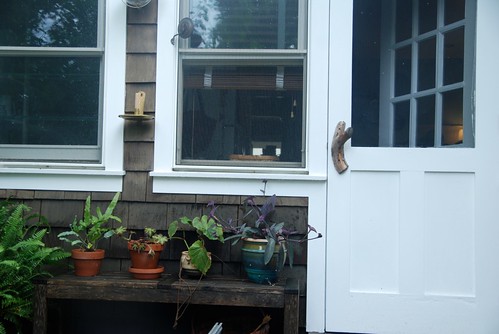







this is the time in my garden when some things begin to peter out and gaps and holes begin to appear in planters, window boxes and pots.
a simple way to increase your plant collection at no cost is to root your own plants. coleus, mint, basil, lavender, wandering jew, begonias, geraniums, sweet potato vine as well as many houseplants such as african violets, ivy, spider plant, philodendron and creeping fig all root well in water.
most plants that can successfully produce roots in water have thick, succulent leaves and stems. don't let the above list deter you from trying others though!
below is a simple guide to rooting your plants.
::water the plant thoroughly a day or two before taking cuttings so it is not under drought stress.
::take cuttings from a healthy, vigorous and disease-free plant.
::cut 3 to 6 inch sections of stem that each contain a growing tip, if possible, off the parent plant. make a clean, angled cut just above a leaf node.
::trim off any leaves on the lowest one-third of the cutting, keeping at least two leaves on each cutting.
::place the cuttings in a water-filled jar so that the leafless portion of the stem is submerged and the remaining leaves are out of the water and hanging over or resting on the lip of the jar.
::set the jar with cuttings and water somewhere that gets partial sun, like a windowsill.
::check the cuttings regularly. add more water to replace any that evaporates and replace water that becomes cloudy.
::if roots turn brown and mushy with rot, discard the cuttings and water, clean the jar and start over with fresh cuttings.
::once several roots have appeared and grown a few inches long, the cuttings are ready to be gently planted in moist potting soil.
happy rooting!!

No comments:
Post a Comment